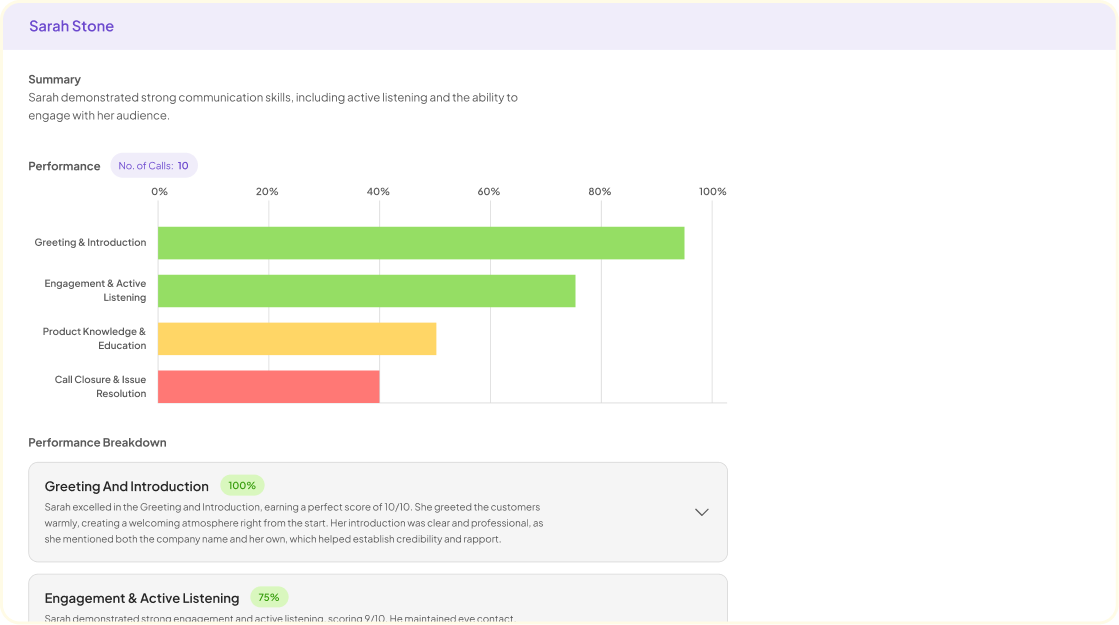Crafting your Internal Mobility Blueprint is crucial for organizations aiming to enhance employee growth and retention. This blueprint serves as a foundation for developing an internal mobility strategy that is clear, accessible, and tailored to the needs of your workforce. By focusing on the principles of effective communication and supportive structures, companies can empower employees to explore new roles within the organization.
The key to successful internal mobility lies in understanding the unique aspirations of your employees and aligning them with available opportunities. A well-designed blueprint addresses crucial questions: Who will benefit from the mobility opportunities? How can the process be streamlined? Why is internal mobility essential for retention and engagement? In creating your Internal Mobility Blueprint, you can foster a culture of growth, ensuring that talent is not only recognized but also nurtured within your organization.
Understanding the Internal Mobility Blueprint
The Internal Mobility Blueprint serves as a strategic framework for organizations aiming to enhance employee movement within their ranks. Understanding this blueprint is essential, as it identifies pathways for talent development and retention. By optimizing internal mobility, companies can boost employee satisfaction and reduce turnover rates. This approach not only aligns individual aspirations with organizational needs but also cultivates a thriving workforce.
Key components of the Internal Mobility Blueprint include clear communication channels, accessible resources for skill development, and a structured process for applying to new roles. Organizations must establish transparent criteria for internal job postings and provide training programs to equip employees with necessary skills. Additionally, fostering a culture of mentorship and feedback can play a crucial role in supporting internal movement. By embracing these elements, organizations can create an engaging environment where employees feel valued and motivated to grow within the company.
The Importance of an Effective Internal Mobility Blueprint
An effective Internal Mobility Blueprint is crucial for any organization looking to optimize talent retention and engagement. By establishing clear pathways for internal movement, employees feel empowered to explore new roles, thus fostering a culture of growth and development. This blueprint not only enhances employee satisfaction but also drives overall productivity, as motivated individuals contribute more meaningfully to the organization.
Moreover, an Internal Mobility Blueprint provides a structured framework for both managers and employees to understand available opportunities. It ensures that talent is utilized effectively across the organization while reducing the need for external hiring. This process helps create a cohesive team dynamic, enhancing collaboration and knowledge sharing. Ultimately, a well-designed blueprint aligns individual aspirations with organizational objectives, benefiting employees and the company alike.
Defining Key Objectives in Your Blueprint
Defining key objectives in your Internal Mobility Blueprint is essential for creating a successful internal mobility process. Establishing clear objectives ensures that all stakeholders understand the direction and outcomes of the initiative. These objectives help align organizational goals with employee career aspirations, fostering a culture of growth and development.
To effectively define these objectives, consider the following points:
Identify Desired Outcomes: Determine the key successes you want to achieve, such as improving retention rates or enhancing employee satisfaction.
Engage Stakeholders: Involve HR, managers, and employees in the discussion to gather insights and ensure buy-in.
Measure Effectiveness: Develop metrics to evaluate the success of the internal mobility program, including tracking career progression and employee feedback.
By focusing on these elements, your Internal Mobility Blueprint will serve as a comprehensive guide that meets the needs of both the organization and its workforce.
Designing Your Internal Mobility Blueprint
Designing your Internal Mobility Blueprint involves creating a structured approach to facilitate employee growth within your organization. This blueprint is essential for establishing clear pathways for career advancement, skill development, and role transitions. By defining specific strategies, businesses can enhance employee satisfaction and retention. Internal mobility enhances organizational culture and promotes a sense of belonging among employees.
To effectively design this blueprint, consider the following key elements:
- Assessment of Current Roles: Review existing job descriptions and competencies to identify potential mobility opportunities.
- Skill Gap Analysis: Evaluate employee skills against current and future needs to uncover areas for development.
- Training and Development Programs: Implement workshops, mentorship, and online resources to help employees build required skills.
- Clear Communication Channels: Maintain open dialogue about available opportunities and pathways to career growth.
- Feedback Mechanisms: Create processes for regular feedback and discussions regarding career aspirations and goals.
By integrating these components, the Internal Mobility Blueprint can successfully guide both employees and management toward a more dynamic workplace.
Steps to Build a Successful Internal Mobility Process
Building a successful internal mobility process requires careful design and execution. Begin by defining clear goals that align with your organization’s strategy. This clarity will serve as the foundation of your Internal Mobility Blueprint. Engage stakeholders from various departments early in the process to gather insights and foster collaboration. This inclusive approach ensures that everyone understands the value and importance of internal mobility.
Next, create a transparent framework to guide employees through career development opportunities. Outline the paths available, and specify the skills and experiences required for each role. Implement regular training and mentorship programs to support employee growth. Additionally, establishing a feedback mechanism allows for continual refinements to the process, ensuring it meets evolving needs. By following these steps, organizations can enhance employee satisfaction, improve retention, and cultivate a talent pool ready for advancement.
Tools and Technologies to Support Your Blueprint
To implement an effective internal mobility process, various tools and technologies can play a crucial role. These resources provide the necessary support to successfully execute your Internal Mobility Blueprint. In particular, platforms that facilitate data analysis enable organizations to gather insights about employee skills, aspirations, and potential career paths. This information can empower both employees and management to make informed choices regarding internal opportunities.
Additionally, user-friendly dashboards can display relevant data trends and metrics, allowing stakeholders to visualize the internal mobility landscape effectively. Communication tools also enhance collaboration by connecting employees with potential mentors and opportunities, ensuring they are aware of available roles. Integrating these technologies creates a holistic environment where employees can explore their career development while aligning with organizational goals. Overall, the right combination of tools and systems can significantly enhance your internal mobility process.
Conclusion: Finalizing Your Internal Mobility Blueprint
As you finalize your internal mobility blueprint, reflect on the processes and structures put in place. This blueprint should serve as a dynamic framework, adaptable to the needs of the organization and its employees. Emphasize open communication, leadership support, and clear guidelines to facilitate movement within the organization. This collaborative approach not only enhances employee satisfaction but also drives overall organizational success.
Additionally, consider how to continuously evaluate and adjust your internal mobility strategies. Gathering feedback from team members can provide valuable insights into what works and what may need refinement. This ongoing improvement will ensure that your internal mobility blueprint remains relevant and effective in fostering a culture of growth and opportunity.


